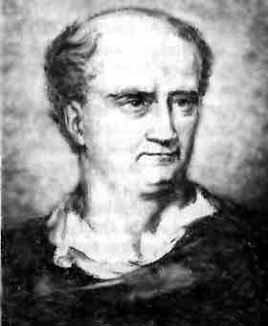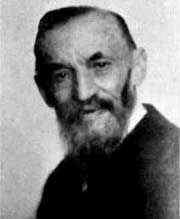- About MAA
- Membership
- MAA Publications
- Periodicals
- Blogs
- MAA Book Series
- MAA Press (an imprint of the AMS)
- MAA Notes
- MAA Reviews
- Mathematical Communication
- Information for Libraries
- Author Resources
- Advertise with MAA
- Meetings
- Competitions
- Programs
- Communities
- MAA Sections
- SIGMAA
- MAA Connect
- Students
- MAA Awards
- Awards Booklets
- Writing Awards
- Teaching Awards
- Service Awards
- Research Awards
- Lecture Awards
- Putnam Competition Individual and Team Winners
- D. E. Shaw Group AMC 8 Awards & Certificates
- Maryam Mirzakhani AMC 10 A Awards & Certificates
- Two Sigma AMC 10 B Awards & Certificates
- Jane Street AMC 12 A Awards & Certificates
- Akamai AMC 12 B Awards & Certificates
- High School Teachers
- News
You are here
Pitfalls and Potential Solutions to Your Primary Source Problems: It’s great, but at what cost?
The history is interesting and pedagogically valuable,
but you can't justify the time required.
Example
A barrier (real or perceived) to utilizing primary sources in the classroom is the amount of time required to teach in this non-conventional way. This is mitigated as we must consider that students aren’t understanding the material as well with our standard lectures. On the other hand, we don’t have unlimited class time to cover the syllabus. And so we have to do a cost / benefit analysis. I’ll illustrate that with two projects that fell on opposite sides of that decision.
After teaching the ODE course multiple times, I noticed that my students repeatedly messed up the connection between the linear dependence of functions and their Wronskian.[20] It isn’t the most clear statement as the converse of the relevant theorem is false. But it can be made true by adding an easy condition that is almost always satisfied by functions we study. Upon researching this theorem, I discovered an interesting story. For years very respected mathematicians, including Charles Hermite (1822–1901), Camille Jordan (1838–1922), and Pierre Laurent (1813–1854), made the exact same mistake that my students make, and Paul Mansion (1844–1919) gave an incorrect additional condition to validate the converse. Giuseppe Peano was the first to notice the mistake in 1889 (luckily this time with with no symbolic logic) [Peano 1889a; 1889b].
Contrast this with my research on the method of reduction of order,[21] with the hope of using it in the classroom. This also involved an interesting story, with two different methods published in two papers (“Solution de différens problémes de calcul intégral” and “Extract de différentes lettres de M. d’Alembert à M. De La Grange écrites pendant les années 1764 & 1765”) by two famous mathematicians (Joseph-Louis Lagrange (1736–1813) and Jean le Rond d’Alembert (1717–1783)), one right after each other (pp. 179–380 and pp. 381–396) in the same volume (3) of the same journal (Miscellanea Taurinensia) [Lagrange 1766; d’Alembert 1766]! The standard method in use today is d’Alembert’s.
For both of these topics, covering the material using primary sources takes longer than teaching the concepts traditionally, but there are other benefits that may justify the time spent. In the first case, in addition to gaining a better understanding of the Wronskian, the benefit was developing a better comprehension of the underlying logic, which is obviously necessary for success across the mathematics curriculum. As such, it was worth creating a PSP for use in the classroom. In the second case, in addition to a better understanding of reduction of order, the benefit was gaining a comprehension of linear and adjoint operators. These concepts aren’t as transferrable to other parts of the standard curriculum, so I judged that it was not worth creating a PSP based on these texts.


Figure 8. Josef-Maria Hoëné-Wronski (1776–1853) and Guiseppe Peano (1858–1932). Convergence Portrait Gallery.
It may help to know that . . .
- There is no general answer to this question. A project that is time-appropriate for use in one classroom might not be appropriate in another because of necessary prerequisites, learning outcomes, or type of students. And that same project may be inappropriate for other sections of the same class at the same school.
- You can think outside the box. In addition to differential equations, the Wronskian PSP also made a good project in a Linear Algebra course and an Introduction to Proofs class, as it really does concentrate on logic—the relationships between a statement and its converse, contrapositive, and inverse. As such it has been used by other instructors, and it ended up being my most popular PSP [Parker 2021c].
- A project that is borderline-appropriate for your classroom use might still be very useful to others and should be shared. It can make for an interesting math club talk or publication in a journal. Both my Wronskian and reduction of order projects appeared in Convergence / Loci [Engdahl & Parker 2011; Cummings & Parker 2015].[22] In both cases my co-author was an undergraduate who undertook the translations.
[20] The theorem states that functions \(f_1, \ldots, f_n\) that are linearly dependent on an interval \(I\) will have a zero Wronskian.
Adam E. Parker (Wittenberg University), "Pitfalls and Potential Solutions to Your Primary Source Problems: It’s great, but at what cost?," Convergence (December 2023)




